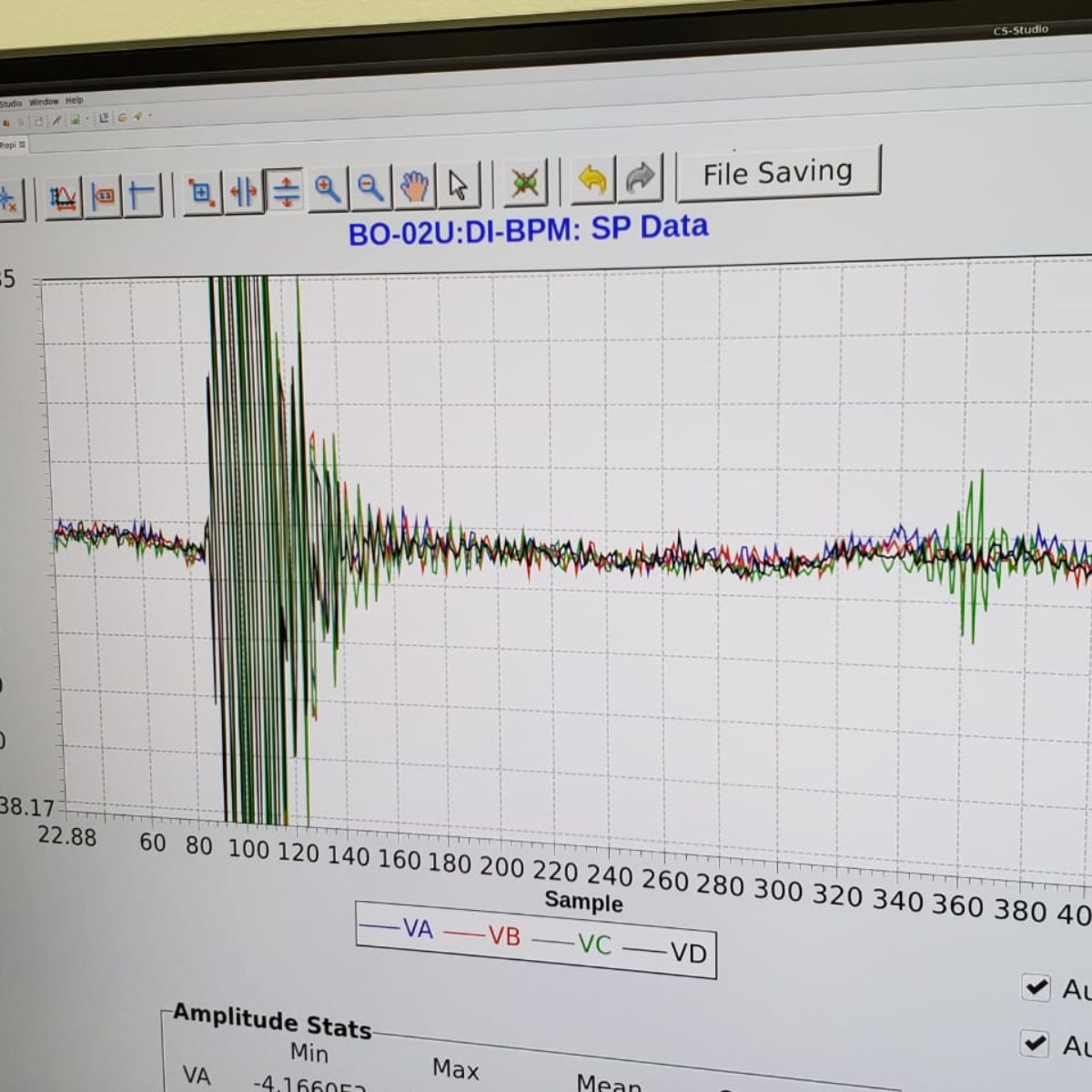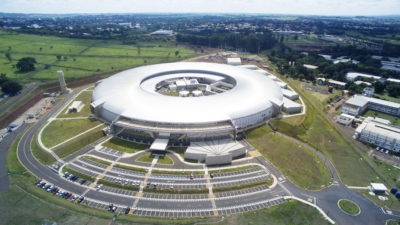
New Brazilian synchrotron light source will allow unprecedented experiments benefitting many fields
In the early evening of March 8th, when the campus of the Brazilian Center for Research in Energy and Materials (CNPEM) was mostly silent, shouts of celebration echoed through the corridors of the Sirius building, the new Brazilian synchrotron light source. Inside, the team responsible for the installation of the particle accelerators reached another milestone: the first loop around the second among its three accelerators: the booster. It is a finely tuned equipment, along which the electrons must travel with micrometric precision.
After the initial production and acceleration of the electrons in the Linac, the electrons gain more and more energy at each loop around the Booster. When they reach the appropriate energy levels, the electrons are deposited in the main accelerator, called storage ring, where they remain for long periods of time generating synchrotron light.
The next steps for the new light source include finish the assembly of the third particle accelerator and the first research stations. The opening for users from all over Brazil and abroad is expected for 2020.
About Sirius
 Sirius is the largest project in Brazilian science, a state-of-the-art infrastructure, strategic for cutting-edge scientific research. Sirius will be a laboratory with research facilities open to scientific and industrial communities, which will allow the search for solutions to global problems in areas such as health, agriculture, energy and the environment.
Sirius is the largest project in Brazilian science, a state-of-the-art infrastructure, strategic for cutting-edge scientific research. Sirius will be a laboratory with research facilities open to scientific and industrial communities, which will allow the search for solutions to global problems in areas such as health, agriculture, energy and the environment.
In November 2018, the first stage of Sirius was delivered, with the completion of the construction works: a 68,000-square-foot building designed and built to meet unprecedented mechanical and thermal stability standards. The first stage also included the assembly of the first two electron accelerators.
The second stage of the project includes the start of operation and the opening of the first six beamlines for the scientific community. The complete project includes seven other beamlines to be opened by 2021. In total, Sirius can house up to 38 beamlines.
The whole project – which includes the building, the three electron accelerators, 13 research stations, and all human resources – demands investments of BRL 1.8 billion. This amount is being funded by the Brazilian Ministry of Science, Technology, Innovation and Communications (MCTIC).
Designed by Brazilians, Sirius has so far had around 85% the resources invested in Brazil, in partnership with Brazilian companies. Contracts were established with more than 300 small, medium and large companies, 45 of which are directly involved in technological developments, in partnership with LNLS and CNPEM. This number does not include companies working in the construction works, which are managed by the contractor.
The 10th Workshop on Infrared Microscopy and Spectroscopy with Accelerator Based Sources will be held September 23rd-27th
PRESSYNC is taking place between July 31st and August 2nd, 2019